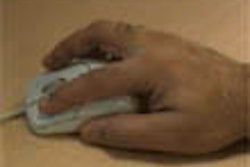Radiologists in South Carolina found that speech recognition is profitable, reduces turnaround time, and improves the accuracy of reports. But getting rid of the transcriptionists is the wrong move, according to Dr. J. Carlisle Hewitt, who advocates retaining them as editors.
"If (a radiologist) want to become an editor, fine, then save the hospital money," he said. "If you want to be a little more productive and happier, then keep the transcriptionists and make them editors."
Hewitt, of Carolina Radiology Associates (CRA) in Myrtle Beach, SC, spoke at PACS 2004: Working in an Integrated Digital Healthcare Enterprise, sponsored by the University of Rochester School of Medicine and Dentistry in Rochester, NY.
About seven years ago, the CRA decided to adopt speech recognition technology due to a number of factors, including a shortage of transcriptionists and a report turnaround time of around 24 to 48 hours. The reporting delays were problematic, Hewitt said.
"It's almost like the whole department becomes constipated... and physicians were very upset," he said.
CRA decided to approach the hospital administration about purchasing a speech recognition system. The group also initiated the vendor selection process and traveled to another institution for an on-site evaluation of the speech recognition system.
From that visit, CRA found that radiologists hated being editors, and chose to keep transcriptionists to serve that function. They also chose a radiologist to spearhead the purchase.
While the hospital administration agreed with the decision to purchase a speech recognition system, they had no funds budgeted for the purchase, Hewitt said. So CRA offered to purchase the system (PowerScribe, Dictaphone Healthcare Solutions Group, Stratford, CT), and then lease it back to the hospital. The leasing fee is negotiated annually.
Transcriptionists became CRA employees, and are now considered editors, Hewitt said. A full-time IT full-time equivalent (FTE) was hired, who is now supplied by the hospital. The speech recognition system is integrated with the hospital's Meditech HIS.
After six years, the system has had a maximum downtime of one hour. A backup system is still necessary, however, Hewitt said. The system produces a small profit, and the new editors doubled their output after its introduction.
Report turnaround time is now down to less than eight hours, though reports are frequently ready in one to three hours, Hewitt said. In addition, 95% of reports are signed by 6 p.m.
CRA noticed that the effectiveness of speech recognition improves with use. "The speed of the dictator is not a problem, so long as they speak clearly," he said. Moreover, all reports are verified prior to electronic signature, and there are no HIPAA issues.
It's important to be aware of the environment where speech recognition is placed, and background noise must be limited, Hewitt noted. Microphones should offer barcoding capabilities.
The system has been a big success. Procedure volume increased from 50,000 in 1998 to 120,000 in 2002, without increase in FTE's. In addition, radiologists' production has risen by about 15%, Hewitt said.
By Erik L. RidleyAuntMinnie.com staff writer
June 8, 2004
Related Reading
SR evangelist touts technology's benefits, drawbacks, May 21, 2004
Speech recognition shows strength in teaching hospital, April 23, 2004
Imaging reports also benefit from improved signal-to-noise ratio, May 3, 2004
SCAR members offer solutions for data deluge, February 24, 2004
Machine language: Radiologist offers tips on optimizing speech recognition, February 4, 2004
Copyright © 2004 AuntMinnie.com



















